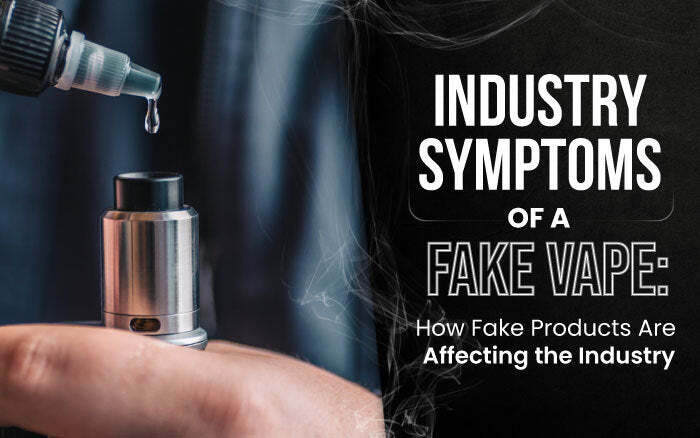Industry Symptoms of a Fake Vape: How Fake Products Are Affecting the Industry
Estimated 0 min read
The vape industry is still considered to be a part of an emerging market even though it is already a part of many people’s daily lives. As more and more product innovations make an appearance, the market continues to grow, along with actors who take advantage of it with counterfeit products and inspire impending regulations that aim to protect consumers from these dangerous fake vapes.
But this is not the only reason why regulations are constantly being drawn up.
Of course, it can be very frustrating to encounter regulations that only seem to be placing the industry in a chokehold, and some actually do for all the wrong reasons, but not all of them. For instance, regulations that intend to keep fake vapes and dangerous products from the hands of unexpecting consumers will actually help the industry grow in the long run. If there is less risk of counterfeit products reaching the larger consumer market, then sales will naturally increase, or at least that’s what logic would tell us.
One of the main symptoms of fake vape products in the legal industry is consumers deferring back to smoking alternatives. Smoking is still considerably cheaper and for many tobacco still remains the more popular choice.
If counterfeit items make it to the commercial landscape, then even retailers like us will need to continue to warn consumers of them, even if it puts our business at risk. Although, it may also represent a business opportunity if as diligent retailers we’re able to guarantee a risk-free product. Which is something we’re particularly proud of at VapeRanger, where we offer vape products from trustworthy suppliers at excellent wholesale prices.
“Trustworthy suppliers” sounds like a cliche line designed to sell more products, but we actually mean it when we say it. Picture it like this: most vapes, at least those that are profitable, are made in China. The Chinese market, even though it is highly competitive in terms of pricing, is not the easiest place to find trustworthy suppliers. That’s why we’ve developed long-term relationships with our suppliers, not just enterprises and factories, but people we trust to give us quality products with safety standards that meet our market’s expectations. In other words, your expectations and your customer’s expectations are our top concern.
Another important result of the war between real vs fake vapes is that counterfeit items make entry barriers a lot higher for other emerging markets outside the U.S. If a market like the American market is still at risk of counterfeit items, then other potentially strong markets with weak regulations will be more difficult to access once consumers have been warned of the risks posed by fake products.
That said:
You’ll want to know everything you can about what is in fake nicotine vapes and how to spot them. But first, why are there fake vapes at all?
In short, the answer is actually quite simple. Manufacturers who operate in the black market use fillers that cost less than the ingredients that real products use. The most common fillers are:
- Vitamin E Acetate
- Polyethylene Glycol
- Propylene Glycol
- Vegetable Glycerin
If you’ve taken the time to look into each of these ingredients, then you might have noticed that most, if not all of them, are in fact approved by the FDA for consumption. But this does not mean that they are approved or safe for inhalation.
A few methods you can use to spot fake vapes are checking for discoloration and poor printing on the label, the lack of warning signs on the label or packaging, spelling and grammar mistakes, the brand logo is the same as the original logo, and making sure that the packaging has the same design as the original packaging. If you want to learn more about how to differentiate between real vs fake nicotine vapes, then check out our blog on 12 Ways to Spot Fake Vape Juices.







